

Auschwitz

entrance showing double electric fence
Auschwitz (Polish Oświęcim) town in southern Poland, situated on the Vistula River about 32 miles southwest of Kraków, and site of the largest concentration camp and death camp run by Nazi Germany during World War II (1939-1945). The name Auschwitz is commonly applied to the complex of death and concentration camps near the Polish town of Oświęcim.
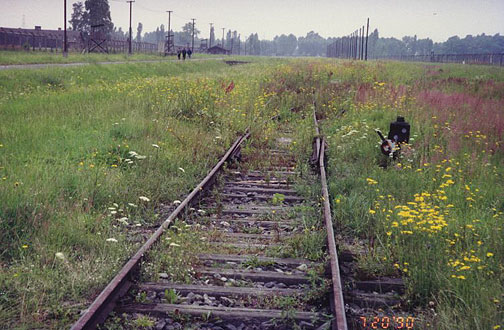
tracks for the arriving trains
The Auschwitz complex was the site of scientifically planned and efficiently executed genocide during World War II. Accurate statistics were not kept, but the estimates of deaths at the camp complex range from 1.5 million to as many as 4 million. Camp Commandant Rudolf Höss admitted to a minimum figure of 2.5 million deaths at Auschwitz. Jews comprised the largest number of victims, and Auschwitz has become the prime symbol of what became known as the Holocaust of European Jewry; at least one-third of the estimated 5 million to 6 million Jews killed by the Nazis during World War II died there. Large numbers of Poles, Soviet prisoners of war, Roma (Gypsies), and homosexuals also died at Auschwitz.
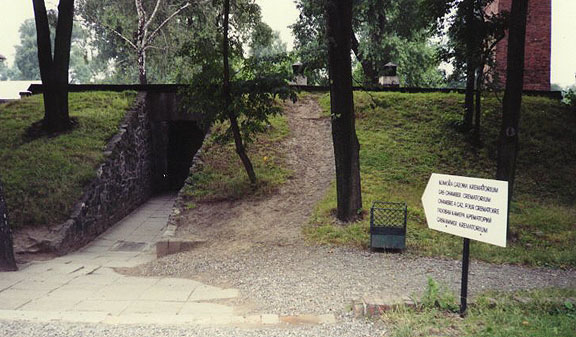
the crematorium

The Nazis established Auschwitz in April 1940 under the direction of Heinrich Himmler, chief of two Nazi organizations—the Nazi guards known as the Schutzstaffel (SS), and the secret police known as the Gestapo. The camp at Auschwitz originally housed political prisoners from occupied Poland and from concentration camps within Germany. Construction of nearby Birkenau (Brzenzinka), also known as Auschwitz II, began in October 1941 and included a women's section after August 1942.
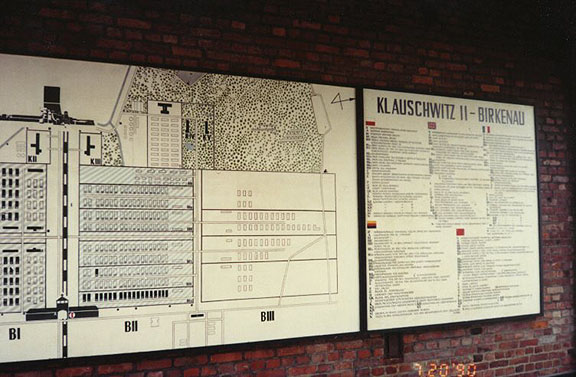
Plan for KL (Koncentration Lager) Auschwitz II
Birkenau had four gas chambers, designed to resemble showers, and four crematoria, used to incinerate bodies. Approximately 40 more satellite camps were established around Auschwitz. These were forced labor camps and were known collectively as Auschwitz III. The first one was built at Monowitz and held Poles who had been forcibly evacuated from their hometowns by the Nazis.
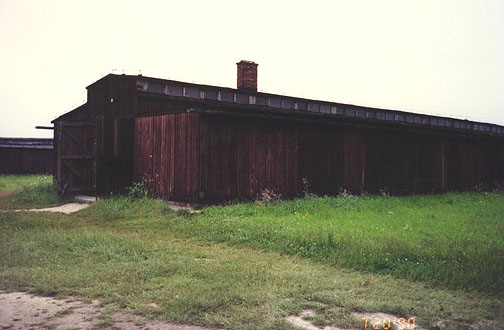
one of the barracks in KL Auschwitz II
Prisoners were transported from all over Nazi-occupied Europe by rail, arriving
at Auschwitz in daily convoys. Arrivals at the complex were separated into three
groups. One group went to the gas chambers within a few hours; these people were
sent to the Birkenau camp, where more than 20,000 people could be gassed and
cremated each day. At Birkenau, the Nazis used a cyanide gas called Zyklon-B,
which was manufactured by a pest-control company.
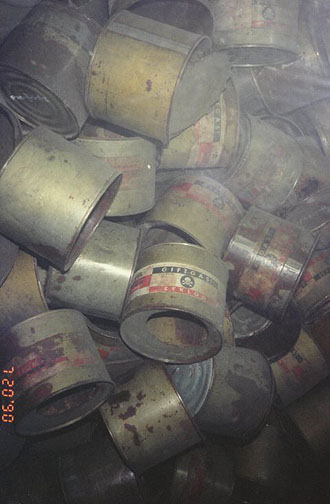
cans which had contained the poison gas
A second group of prisoners were used as slave labor at industrial factories for such companies as I. G. Farben and Krupp. At the Auschwitz complex 405,000 prisoners were recorded as laborers between 1940 and 1945. Of these about 340,000 perished through executions, beatings, starvation, and sickness. Some prisoners survived through the help of German industrialist Oskar Schindler, who saved about 1000 Polish Jews by diverting them from Auschwitz to work for him, first in his factory near Kraków and later at a factory in what is now the Czech Republic. A third group, mostly twins and dwarfs, underwent medical experiments at the hands of doctors such as Josef Mengele, who was also known as the "Angel of Death."
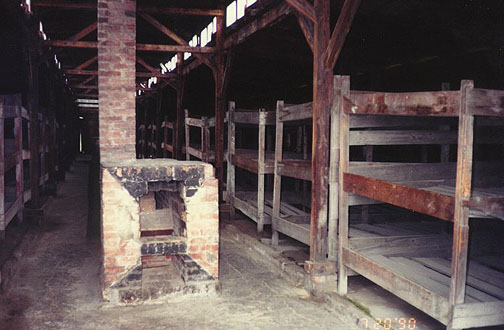
inside one of the barracks
The camp was staffed partly by prisoners, some of whom were selected to be kapos (orderlies) and sonderkommandos (workers at the crematoria). Members of these groups were killed periodically. The kapos and sonderkommandos were supervised by members of the SS; altogether 6000 SS members worked at Auschwitz.
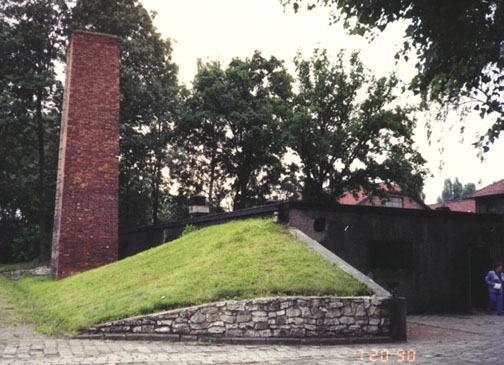
the crematorium
By 1943 resistance organizations had developed in the camp. These organizations
helped a few prisoners escape; these escapees took with them news of
exterminations, such as the killing of hundreds of thousands of Jews transported
from Hungary between May and July 1944. In October 1944 a group of
sonderkommandos destroyed one of the gas chambers at Birkenau. They and their
accomplices, a group of women from the Monowitz labor camp, were all put to
death.

where the dead bodies were burned
When the Soviet army marched into Auschwitz to liberate the camp on January 27, 1945, they found about 7600 survivors abandoned there. More than 58,000 prisoners had already been evacuated by the Nazis and sent on a final death march to Germany.
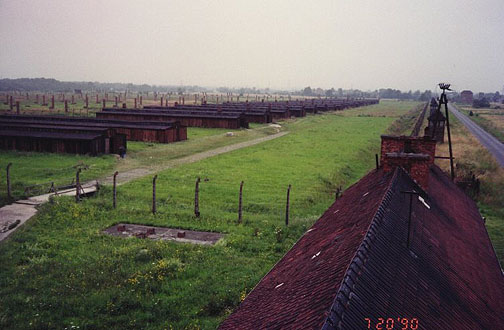
as it looks yet today
In 1946 Poland founded a museum at the site of the Auschwitz concentration camp
in remembrance of its victims. By 1994, about 22 million visitors—700,000
annually—had passed through the iron gates that bear the cynical motto Arbeit
macht frei (work makes one free).
Contributed By: George Sanford Microsoft Encarta
![]()


barracks preserved as a reminder

beside these barracks

was the memory wall
were many prisoners were executed
![]()
Link to the Documentary Film
a story of those who resisted in the camps
![]()
![]()